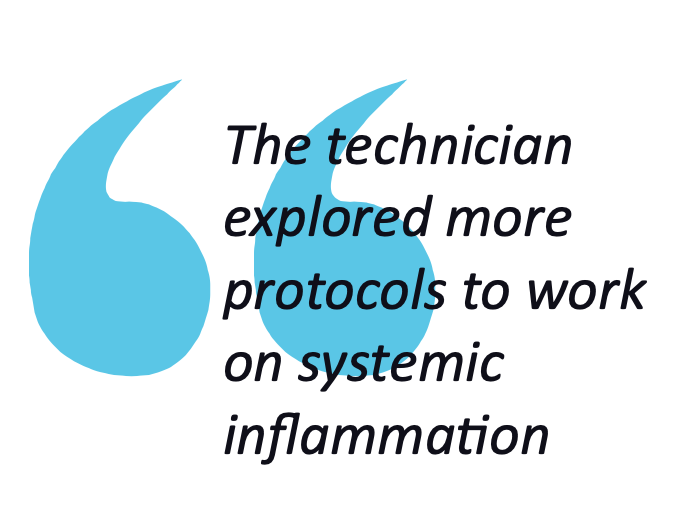
A mare in heat and the complexities of the reproductive system can often pose challenges for you if you’re a horse owner or rider! This is the story of Kitty, a mare with a long history of strong heat cycles and an inflamed ovary. Let’s take a look at how cutting-edge microcurrent therapy finally offered her relief.
Navigating Mare Heat Cycles
Most mares of breeding age go into heat in late winter or early spring, triggered by increased sunlight. If a mare doesn’t become pregnant during a heat cycle, she will continue to experience a regular estrous cycle of 21 days.
Like most mammals, mares have two ovaries that play a crucial role. They’re responsible for:
- producing and releasing eggs during the estrous cycle, and
- producing hormones (estrogen and progesterone) that regulate the reproductive system.
Tackling the Challenges of a Mare in Heat
A mare in heat can show various signs, such as spraying, tail swishing, aggression, stress, hypersensitivity, stiffness, or even lameness.
In general, they can have herbal supplements for comfort and stress relief. But when discomfort or aggressiveness persists, it can indicate ovarian pain or reproductive system disorders.
Kitty, as we indicated, had a long history of intense heat cycles that persisted in the presence of any gelding. This involved constantly spraying and saturating her tail and created a messy situation for anyone near her, including her rider.
She also experienced lameness in her right hind leg and was superficially diagnosed with a potential fracture or soft tissue tear of the 3rd trochanter. Kitty was prescribed an eight-month rest period and received progesterone due to lameness occurring after her mareish outbursts.
Equiscope Therapy for Mares with Hormonal Imbalances
The technician first applied an Equiscope protocol on her front end because she was stiff and unsettled. And then on her right hind femur, as diagnosed by the veterinarian. After three weeks of therapy, she seemed to improve until she began to cycle again, and professionals found that her right ovary was enlarged.
Given this diagnosis, one veterinarian recommended the removal of the ovary, while another recommended hormone therapy first. Hormone therapy was chosen, but this is where everything spiraled out of control, so the technician explored more protocols to work on systemic inflammation.
 Restoring Balance and Wellness
Restoring Balance and Wellness
Equiscope therapy may address hormonal imbalances by promoting harmony within the body’s systems, including the endocrine system. It can also help to decrease inflammation associated with hormonal issues, such as Kitty’s enlarged ovary.
The therapy gradually improved Kitty’s lameness and normalized her headset, stride, and gait. And by pairing the therapy with Biovigor, a supplement that energizes cells at the mitochondrial level, Kitty was able to progress toward light work.
Enhancing Equine Wellbeing
Kitty’s case highlights the intricate nature of mares in heat and the importance of seeking the addition of alternative therapies. By delving into the complexities of hormonal imbalances and implementing the tailored protocols of Equiscope therapy, we can provide the best possible care for our equine companions!
Intellbio is the sole distributor of the Electro-Equiscope, a cutting-edge, non-invasive, non-chemical, individualized impedance response technology. If you’d like to understand more about this – and how you can train to be a technician and help both humans and horses like Kitty – call us today and let’s talk!
